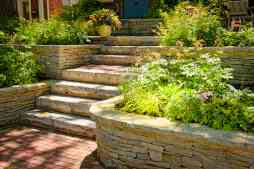Sunlight and Soil: How Light Levels Impact Your Yard’s Ecosystem

Understanding the amount of sunlight your yard receives is crucial for maintaining a healthy and vibrant outdoor space. Sunlight not only affects plant growth but also influences soil health and the overall ecosystem. In this article, we’ll explore how to determine your yard’s light levels and why it matters for your garden’s success.
Why Sunlight Matters in Your Yard
Sunlight is a fundamental energy source that powers photosynthesis, enabling plants to grow and thrive. The amount of sunlight your yard gets can impact which plants will flourish, how soil microorganisms behave, and even influence pest populations. Knowing your yard’s sun exposure helps you make informed choices about plant selection and landscape design.
How to Measure Sunlight in Your Yard
To accurately determine how much sunlight your yard receives, consider observing it throughout the day on a sunny day. Track the areas that get direct sunlight versus those in shade. Tools like a light meter can provide precise measurements of light intensity. Additionally, noting seasonal changes is important because sun angles shift throughout the year affecting exposure.
Types of Sunlight Exposure: Full Sun, Partial Shade, and Shade
Yards generally fall into three categories based on sun exposure: full sun (6 or more hours of direct sunlight daily), partial shade (approximately 3-6 hours), and full shade (less than 3 hours). Each category supports different types of plants; for example, many vegetables require full sun while ferns prefer shaded environments.
Impact of Sunlight on Soil Health
Sunlight influences soil temperature which affects microbial activity essential for nutrient cycling. Warmer soils tend to support faster decomposition rates improving nutrient availability to plants. Conversely, shaded areas may retain moisture longer but could slow down beneficial microbial processes if too cool or damp—balancing these factors contributes to healthy soil ecosystems.
Optimizing Your Yard Based on Light Levels
Once you understand your yard’s sunlight patterns, tailor your gardening practices accordingly. Choose native or adapted plants suited for specific light conditions to ensure robust growth with less maintenance. You can also modify areas by pruning trees or using reflective surfaces to increase light where needed or installing shade structures where protection from intense sun is necessary.
In summary, accurately assessing how much sunlight your yard receives empowers you to create an environment that supports thriving plants and balanced ecosystems. By paying attention to both light levels and their impacts on soil health, you’ll be well-equipped to nurture a flourishing outdoor space all year round.
This text was generated using a large language model, and select text has been reviewed and moderated for purposes such as readability.











